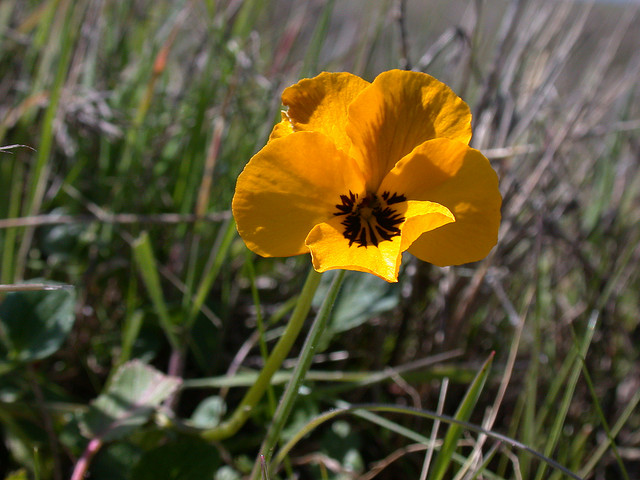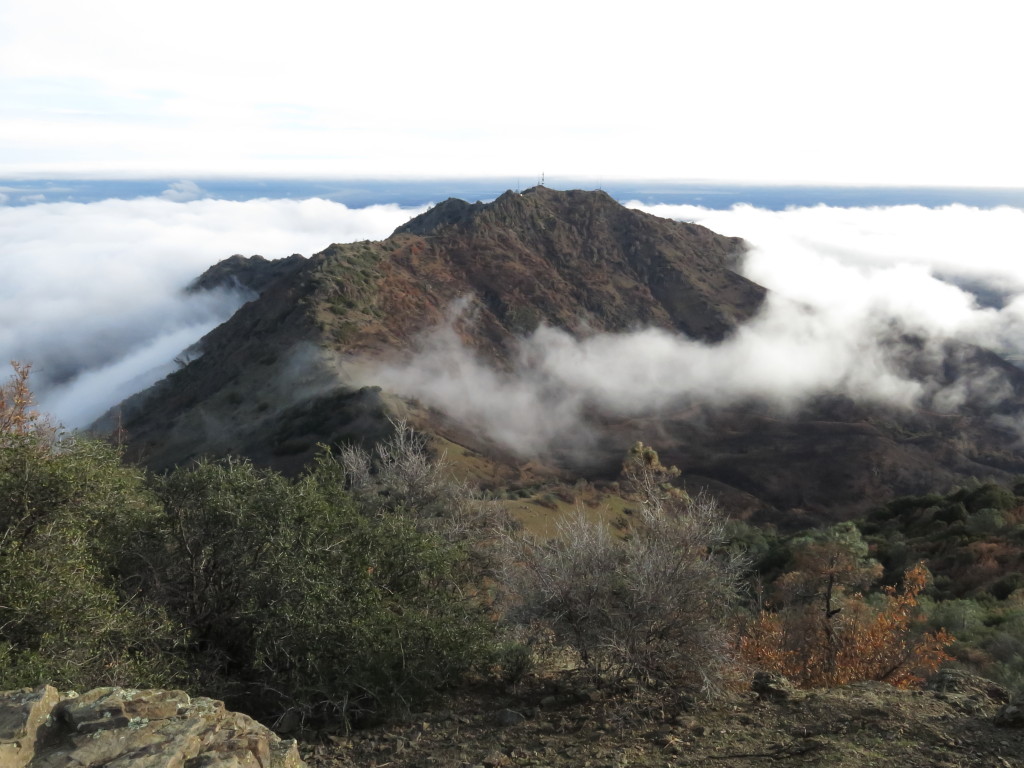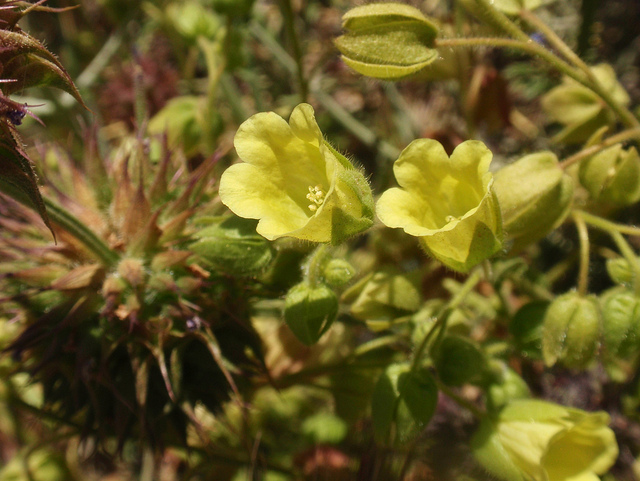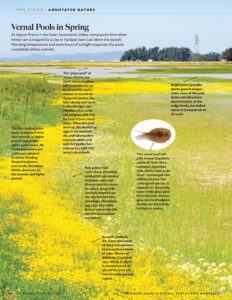Johnny jump up is a sunny, yellow wildflower that pops up in spring. In typical rain years, this viola species can have a hard time of it. Annual grasses, many of them non natives, create a dense carpet that makes it hard for the little jump up (only 1.5 centimeters in diameter) to, well, jump up.
But this year is probably going to shape up well for Viola pedunculata and other late season bloomers, said Lech Naumovich of Golden Hour Restoration Institute. He was readying a team for a morning hike around San Bruno Mountain to survey johnny jump up and other annuals.
“This is a drought year and a lot of people are concerned things aren’t taking off,” said Naumovich. “Even though it’s a dry year, the frequency and timing are very advantageous to our late season annual, native plants.”

Naumovich said that annual grasses germinated earlier in the year but dried up before they got enough water to complete their life cycles. That has left more open habitat for wildflower species to grow. Many have been quietly hanging out as seeds, waiting for the right moment to pop up. The most recent rains should do it for them.
Botanist Heath Bartosh, co-founder of the botanical consulting firm Nomad Ecology, agrees.
“There are a lot of doom and gloom predictions because of the lack of rainfall but I’m not totally convinced of that yet,” Bartosh said.
Take round-leaved filaree, a white-petaled beauty that’s listed as a rare species in the California Native Plant Society’s inventory. Once widespread, Erodium macrophyllum is now isolated to rare patches of grassland valleys and foothill woodlands. Bartosh has been out checking reference populations of the species.
“I went out looking for round-leaved filaree and I checked one of the populations and happened to see it more robust and abundant than I have in the last few years,” Bartosh said. “The timing of the rain may have been good, and the lack of rain in between has reduced the abundance of non-native annuals and given the natives a leg up.”

But the news isn’t good for all wildflower species. Some early bloomers probably lost their window to germinate. Tidy tips, a member of the sunflower family, is normally a standby in low-elevation, grassy hillsides and coastal prairies. But this year Layia platyglossa has been a hard find, said Naumovich.
“That one in particular may have not broken dormancy,” he said. “The seed was in the soil and it got a little bit of rain, but it didn’t have enough soil moisture at the right time of the year.”

“Every year there’s winners and losers because we have a system with so much diversity that some species are adapted to really wet years and some thrive in dry years.” Naumovich said.
Naumovich explained that annuals can be put into two categories. Some germinate every year on the slightest drop of rain. Those species are going to have a tough time during drought years because they are expending all their seed banks without the fruits of reproduction. Their seed banks may last only three to five years, so that a multi-year drought could have a lasting impact.
Other annuals take on a different strategy. They have long-lasting seed banks, and germination happens with the right set of thresholds or cues, such as rain — or fire.
On the eastern slope of Mount Diablo, where a fire tore through the dense chamise habitat last September, wildflowers have a good stab at it for a couple seasons until the shrubs take over again. It’s an experiment in what happens when you combine fire and drought.
“Two years is a big window when you get a biodiversity circus coming to town,” said Bartosh, who is doing a post-fire study of the area. “Particularly with fire flowering annuals, they use this short period of time to take over the landscape, fill their seed bank and wait for the next fire.”

He’s starting to see some beauties like whispering bells, not to mention perennials such as bush mallow and golden eardrop. False gily flowers, Allophyllum, was out there before the fire, but now it’s gargantuan and blooming like crazy.
“It looks like it’s on steroids,” he said. “It’s so big and beefy responding to the nutrients in the soil.”
So, put on your hiking boots and get out there. Just get some advice on where to go because it’s not necessarily going to be splendid everywhere.
“We’re getting close to high time here — mid to late April depending on how things move along here,” said Bartosh. “If it gets really warm, the program may be pushed forward.”
Top picks for wildflower hikes this year:
-
Marin Headlands: Trails above Rodeo Lagoon
-
Mount Diablo: Devil’s Elbow (North Ridge Trail) to Prospector Gap Road
-
Mount Diablo: Green Ranch Road from the Blue Oak Picnic Area.
Guided hikes:
Saturday, April 5
-
Wildflower Scavenger Hunt at Almaden Quicksilver County Park, San Jose
-
Free Wildflower Hike at Edgewood Park, Redwood City
Save Mount Diablo is leading two guided “Fantastic Fire Follower” hikes on April 13 and May 3.
Check BayNature.org’s Events calendar for additional listings





